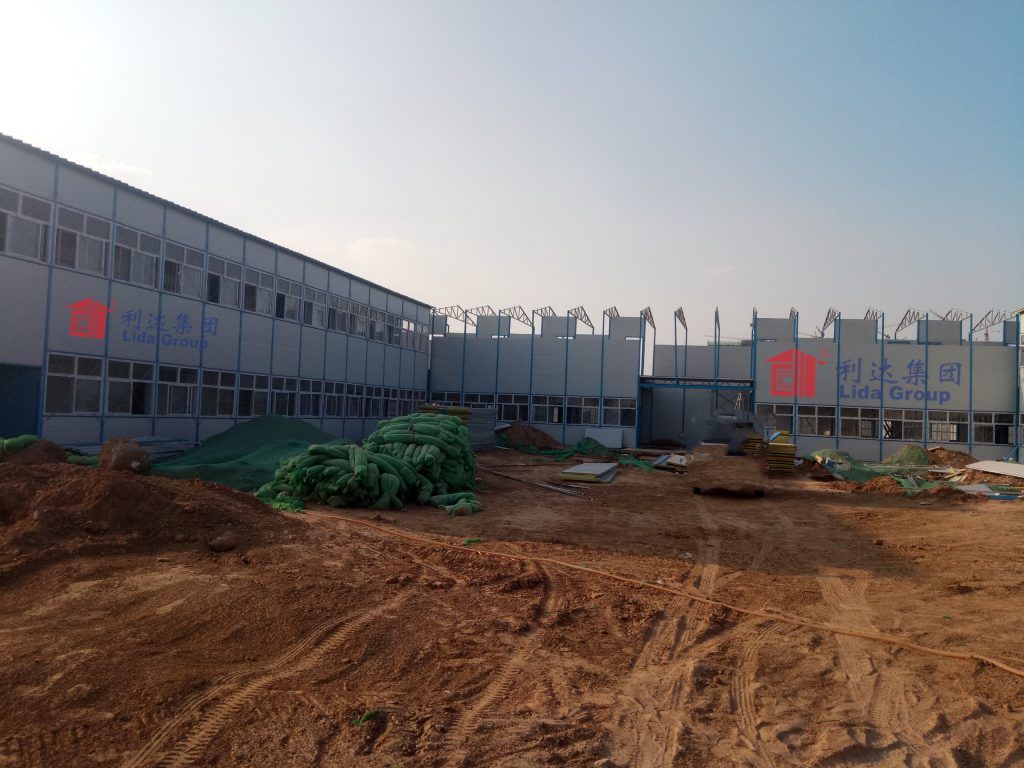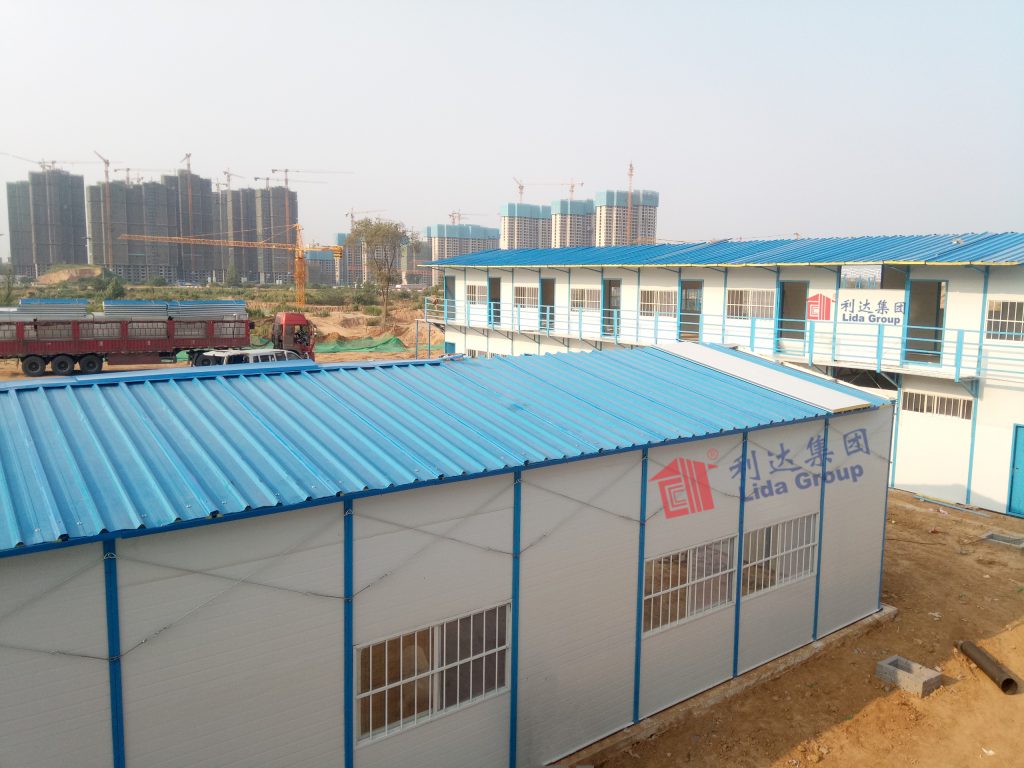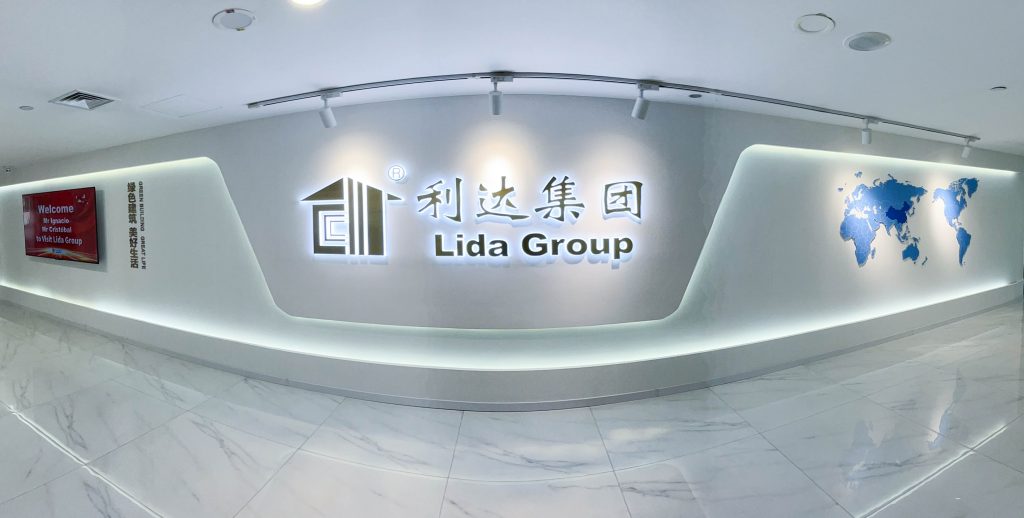The relentless hum of traditional construction sites—where pile drivers roar and concrete mixers churn—has long defined the built environment. Yet this age-old model is crumbling under modern pressures: skilled labor shortages plague 85% of contractors, weather delays cause 28% average schedule overruns, and 39% of global CO₂ emissions stem from construction activities . In this crisis, a quieter revolution is taking hold: prefabricated construction, where buildings take shape in climate-controlled factories before assembly on-site. At the forefront of this transformation stands Lida Group, a Chinese pioneer with three decades of expertise that has redefined speed and affordability across 152 countries and 5,000+ projects . This article explores how Lida’s cost-effective prefab solutions are slashing construction timelines while delivering unmatched value for industries ranging from mining to urban housing.

The Case for Prefab: Why Traditional Construction Is Failing
To understand Lida’s impact, one must first grasp the flaws of conventional building methods. Traditional on-site construction is a fragmented, inefficient process: raw materials arrive unprocessed, laborers work in weather-dependent conditions, and quality varies wildly with worker skill. A 2025 industry analysis found that 63% of conventional electrical rough-ins suffer defects, while falls account for 36% of construction fatalities . For project managers, these issues translate to two crippling consequences: time delays and cost overruns.
Consider a typical 12-story urban apartment complex. Using traditional methods, such a project takes 24–36 months to complete, with 28% of that timeline lost to rain, extreme temperatures, or labor shortages . Material waste adds insult to injury: on-site cutting and fitting generate 15–20% excess waste, driving up costs for steel, concrete, and insulation . In remote sectors like mining or offshore energy, the challenges multiply. Building a 200-person camp in the Arctic using conventional methods could take 18 months—if supply convoys can even reach the site .
Prefabrication solves these pain points by shifting 90% of construction to factory settings . Components are built in controlled environments, parallel to site preparation, eliminating weather delays. Labor efficiency improves: factory workers use automated tools to produce consistent parts, reducing reliance on scarce skilled trades. Material waste drops to 2–5% thanks to precision cutting and closed-loop recycling . For Lida Group, these advantages are not theoretical—they are proven in projects spanning deserts, oceans, and city centers.

Lida’s Technical Pillars: Engineering Speed and Savings
Lida’s success stems from four interconnected technical innovations that merge precision engineering with manufacturing efficiency. These pillars enable the company to deliver projects 50–70% faster than traditional methods while cutting costs by 30–40% .
1. Digital Prototyping: Eliminating Errors Before Production
At the heart of Lida’s process is Building Information Modeling (BIM), a 3D digital platform that integrates mechanical, electrical, and structural systems . Engineers use BIM to detect clashes—such as a pipe intersecting a beam—before fabrication begins, avoiding costly rework on-site. Algorithmic load path optimization further reduces material use: in one mining camp design, Lida cut steel tonnage by 22% without compromising strength .
This digital precision translates directly to time savings. For a European automotive manufacturer’s 150,000 sq. ft. workshop, Lida’s BIM team resolved 17 design conflicts virtually, shaving 8 weeks off the project timeline . The client met its 8-month deadline to launch a new electric vehicle model—a feat impossible with traditional design methods.
2. Advanced Materials: Stronger, Lighter, Cheaper
Lida’s material science innovations balance durability and cost. The company uses S550MC high-strength steel for frames, which is 30% lighter than conventional steel but equally strong . Composite insulation with aerogel achieves R-40 values, reducing energy costs for end-users while cutting material shipping weights. For harsh environments, nano-ceramic coatings protect coastal structures from corrosion, and intumescent paints expand at 200°C to resist fire .
Sustainability also drives cost savings. Lida’s Circusteel™ process uses 98% recycled steel in container buildings, diverting 180,000+ tons of scrap from landfills annually . This recycled steel costs 15–20% less than virgin material and reduces embodied carbon by 72% . In Chile’s BHP copper mine, Lida built 200 container houses from site steel scrap, cutting the client’s Scope 3 emissions by 12% and material costs by $1.2 million .
3. Automated Manufacturing: Precision at Scale
Lida’s six container modular production lines and eight steel structure lines operate with robotic precision . Robotic welding arms achieve 0.1–0.2 mm tolerance on structural connections—far tighter than the ±15 mm tolerance of traditional on-site welding . Laser-guided cutting machines handle complex joints without human error, while climate-controlled painting booths ensure uniform finishes unaffected by humidity.
This automation delivers consistent quality and speed. A 50,000 sq. ft. steel warehouse takes Lida just 12–16 weeks to produce and install, compared to 12+ months for concrete . Quality checks at 12 production stages result in 99.96% dimensional accuracy across components , eliminating costly on-site adjustments. ISO 9001 and CE certifications (EN 1090) validate these processes, giving global clients confidence in compliance .
4. Logistics Intelligence: Getting Components There On Time
Even the best-made components fail if they arrive late. Lida’s AI-powered logistics system optimizes every step of delivery. Nesting algorithms maximize container space, reducing transport costs by 30% . Route optimization software accounts for road restrictions and weather, while just-in-sequence delivery ensures components arrive in the order they are installed—critical for fast assembly.
For remote sites, Lida’s logistics shine. In the Arctic, the company flew volumetric modular units by helicopter to a roadless mining camp, avoiding months of winter supply delays . In the Gulf of Mexico, 78 blast-resistant modules reached Shell USA’s platform during a production shutdown, enabling installation in 6 weeks . These feats cut transport emissions by 41% versus conventional shipping , aligning with sustainability goals while saving time.

Sector Transformations: Case Studies in Speed and Savings
Lida’s prefab solutions adapt to diverse industries, each with unique time and cost pressures. From urban skyscrapers to offshore rigs, the company’s projects demonstrate how prefabrication outperforms traditional methods.
Mining: Rapid Camps in Hostile Environments
Mining companies need fast, durable housing and workshops for remote sites. Traditional construction here is logistically nightmarish—materials must traverse unimproved roads, and labor is scarce. Lida solves this with relocatable, rugged modular units.
In Zambia’s Lumwana Mine, Lida delivered 120 container buildings equipped with solar-ready roofs and water recycling systems . The project took just 10 weeks to install, compared to 6 months for a traditional camp. Solar panels generated 1.2 MWh daily, cutting diesel use by 78% and saving $420,000 annually in fuel costs . AI leak detection sensors reduced water waste by 85%, eliminating costly water truck deliveries .
For BHP’s Chilean copper mine, Lida’s pile-free foundations avoided excavation, protecting fragile ecosystems while speeding installation . The 200-person camp was operational in 12 weeks, and its relocatable design let BHP move units as mining zones shifted—extending the camp’s useful life by 5 years…

Offshore Energy: Typhoon-Proof and Fast to Deploy
Offshore oil and gas platforms demand structures that withstand extreme weather and explosions. Traditional on-site construction here is dangerous and slow, with workers exposed to storms and high winds. Lida’s modular units are built to survive category 5 typhoons and 12 psi blast overpressure .
In the South China Sea, Lida’s 8-story crew quarters survived 2023’s Super Typhoon Saola unscathed, while adjacent traditional modules suffered $6 million in damage . The units used ASTM A588 corrosion-resistant steel and interlocking anchors, and their aerodynamic roofs reduced wind load by 40% . Installation took 8 weeks, cutting crew rotation costs by 33% through improved safety .
For a European offshore platform under the EU’s 2025 Offshore Safety Directive, Lida delivered net-zero energy modules with solar skin™ roofs and hydrogen fuel cells . The project achieved 640 tons of annual CO₂e savings and became the first offshore container building certified under the EU Taxonomy for sustainable activities . Insurance premiums dropped by 28% due to enhanced safety features .
Urban Housing: Solving the Affordability Crisis
Cities worldwide face a housing shortage worsened by slow construction. A 12-story apartment complex in downtown Seattle, built by Lida, took just 11 months to complete—half the industry average . The secret: parallel processing, where factory fabrication of 80 modular units overlapped with site foundation work.
Lida’s urban modules offer superior quality at lower costs. Dimensional accuracy of ±2 mm (vs. ±15 mm for traditional builds) ensures tight seals, reducing air infiltration to 0.6 ACH (air changes per hour) and cutting heating bills by 40% . Composite walls achieve 58 STC (Sound Transmission Class) rating, blocking noise better than conventional drywall .
In Toronto, an 80-unit downtown project was finished in 9 months, enabling the developer to lease units 18 months earlier than planned—generating $2.4 million in additional rental income . In Tokyo, a 14-story modular tower withstood an 8.0-magnitude earthquake, proving prefab’s structural integrity .

Industrial Warehouses: Speed to Market
Manufacturers and logistics firms need warehouses fast to meet supply chain demands. Lida’s prefab steel warehouses deliver on this need. A 150,000 sq. ft. workshop for a European carmaker was installed in 6 months, letting the client launch its new EV model on schedule . The light steel structure supported 20-ton cranes and included shock-absorbing joints for precision machinery .
In Dubai, a desert factory built by Lida became operational in 14 weeks, compared to 10 months for a concrete facility . The warehouse used high-albedo roofing to reduce ambient temperatures by 4°C, cutting cooling costs by 35% . Lida’s wholesale steel pricing further reduced the client’s budget by 30% .
Cost Breakdown: Why Lida’s Prefab Is More Affordable
Lida’s time savings directly drive cost efficiency, but the company’s advantage extends to every line item of a project budget. A comparison with traditional construction reveals where the savings lie:
Labor Costs: 30–50% Reduction
Factory automation reduces labor needs: one robotic welding arm replaces 3–4 manual welders, and automated cutting lines cut labor time by 60% . On-site assembly requires fewer workers—Lida’s 80-unit Toronto apartment complex used 12 crew members for installation, vs. 30 for traditional builds . Skilled labor shortages matter less: factory workers receive specialized training, and Lida’s in-house teams eliminate reliance on local trades .
Material Costs: 15–25% Savings
Precision manufacturing cuts waste: Lida’s 35% lower material waste than traditional methods translates to \(15–\)25 per sq. ft. in savings . Recycled materials reduce costs further: 98% recycled steel costs less than virgin steel, and bio-based insulation from seaweed is 20% cheaper than fiberglass . Bulk purchasing power—Lida produces 1,000+ tons of steel monthly—secures wholesale pricing .
Overhead Costs: Early Revenue and Reduced Risk
Faster completion means earlier revenue for clients. A mining camp operational 6 months early generates \(50,000–\)100,000 daily in production gains . Urban developers start leasing units sooner, and manufacturers begin production ahead of schedule . Overhead costs like site security and equipment rentals drop by 40–60% due to shorter timelines .
Maintenance Costs: Long-Term Savings
Lida’s quality reduces repairs: 99.96% dimensional accuracy means fewer leaks, cracks, or structural issues . Corrosion-resistant coatings and fireproof materials extend building lifespans by 10–15 years . In the South China Sea, Lida’s typhoon-proof units required zero maintenance after Super Typhoon Saola, while traditional modules needed $6 million in repairs .
Sustainability: The Hidden Cost Saver
Sustainability is not just an ethical choice for Lida—it is a cost-saving strategy. The company’s prefab solutions reduce carbon footprints while lowering operational expenses for clients.
Embodied Carbon: 42% Lower
Lida’s use of recycled steel and composite materials cuts embodied carbon by 42% versus traditional builds . The Circusteel™ process alone saves 72% of carbon emissions per ton of steel . For EU clients, this compliance with the EU Taxonomy reduces regulatory risks and unlocks green financing .
Operational Energy: 35–50% Reduction
Aerogel insulation, high-efficiency windows, and solar integration slash energy use. Lida’s urban apartments in Seattle use 40% less electricity than conventional buildings . The Zambian mine’s solar-powered modules saved $420,000 annually in diesel costs . AI energy managers balance consumption across units, further reducing waste .
Water Savings: 85% Reduction
Greywater loops and atmospheric water harvesters cut freshwater use by 85% . Rio Tinto’s Australian outback camp reduced daily water withdrawals from 28,000 L to 4,200 L, eliminating $150,000 in annual water truck costs .
These sustainability features appeal to eco-conscious clients and often qualify for tax incentives. In the U.S., Lida’s net-zero offshore modules earned a client a 30% federal tax credit for renewable energy .

Lida’s One-Stop Service: Eliminating Coordination Costs
A key but often overlooked driver of Lida’s cost and time savings is its one-stop service model. Traditional construction requires coordinating dozens of vendors—architects, manufacturers, logistics firms, and installers—each with their own timelines and costs. Lida integrates all these functions in-house, from design to installation .
The company’s team of 500+ engineers collaborates directly with clients to tailor solutions . For a Saudi Arabian industrial park, Lida handled design, steel production, shipping, and assembly—cutting coordination time by 8 weeks . In-house logistics teams manage customs clearance and last-mile delivery, avoiding delays from third-party brokers .
24/7 multilingual support ensures issues are resolved quickly. When a storm delayed a shipment to Angola, Lida’s local branch rerouted modules within 48 hours, keeping the project on schedule . This end-to-end control reduces errors, delays, and hidden costs—critical for time-sensitive projects.
Global Recognition: Trusted by Giants
Lida’s track record has earned it partnerships with the world’s most demanding organizations. The company is a designated supplier to the United Nations and works with giants like China Construction Group, Shell, Rio Tinto, and BHP . These clients rely on Lida for projects where delays mean millions in losses.
In the 2008 Wenchuan earthquake relief effort, Lida delivered 10,000+ prefab houses in 3 months, earning recognition as an advanced enterprise . For the 2008 Beijing Olympics, the company built temporary facilities that were installed in 6 weeks and reused after the games . These high-pressure projects demonstrate Lida’s ability to deliver speed without sacrificing quality.

Conclusion
Lida Group’s cost-effective prefab construction is more than a technological innovation—it is a solution to the global construction industry’s most pressing problems. By merging digital precision, automated manufacturing, and logistics intelligence, the company slashes project timelines by 50–70% and costs by 30–40% . From Arctic mining camps to urban skyscrapers, Lida’s modules deliver consistent quality, sustainability, and speed.
The evidence is clear in the numbers: 99.96% dimensional accuracy, 35% lower material waste, 42% reduced embodied carbon, and 5,000+ successful projects across 152 countries . For clients, this means earlier revenue, lower risk, and long-term savings. For the industry, Lida represents the future—one where construction is faster, cheaper, and more sustainable.
As urbanization accelerates and climate pressures mount, traditional construction methods will become increasingly unviable. Lida Group’s prefab solutions offer a way forward, proving that speed and cost-effectiveness do not have to come at the expense of quality or sustainability. For any organization looking to build smarter, not harder, Lida is not just a supplier—it is a strategic partner in success.

Related news
-
Rapid Deployment with Our Temporary Mobile Building Units
2025-11-06 17:50:53
-
Sustainable Prefab House Solutions from Lida Group
2025-11-05 17:56:48
-
Lida Group Achieves the Ideal Balance with Cost-Effective Steel Structure Construction for High Quality Metal Building Projects
2025-10-29 15:26:28
contact us
- Tel: +86-532-88966982
- Whatsapp: +86-13793209022
- E-mail: sales@lidajituan.com


